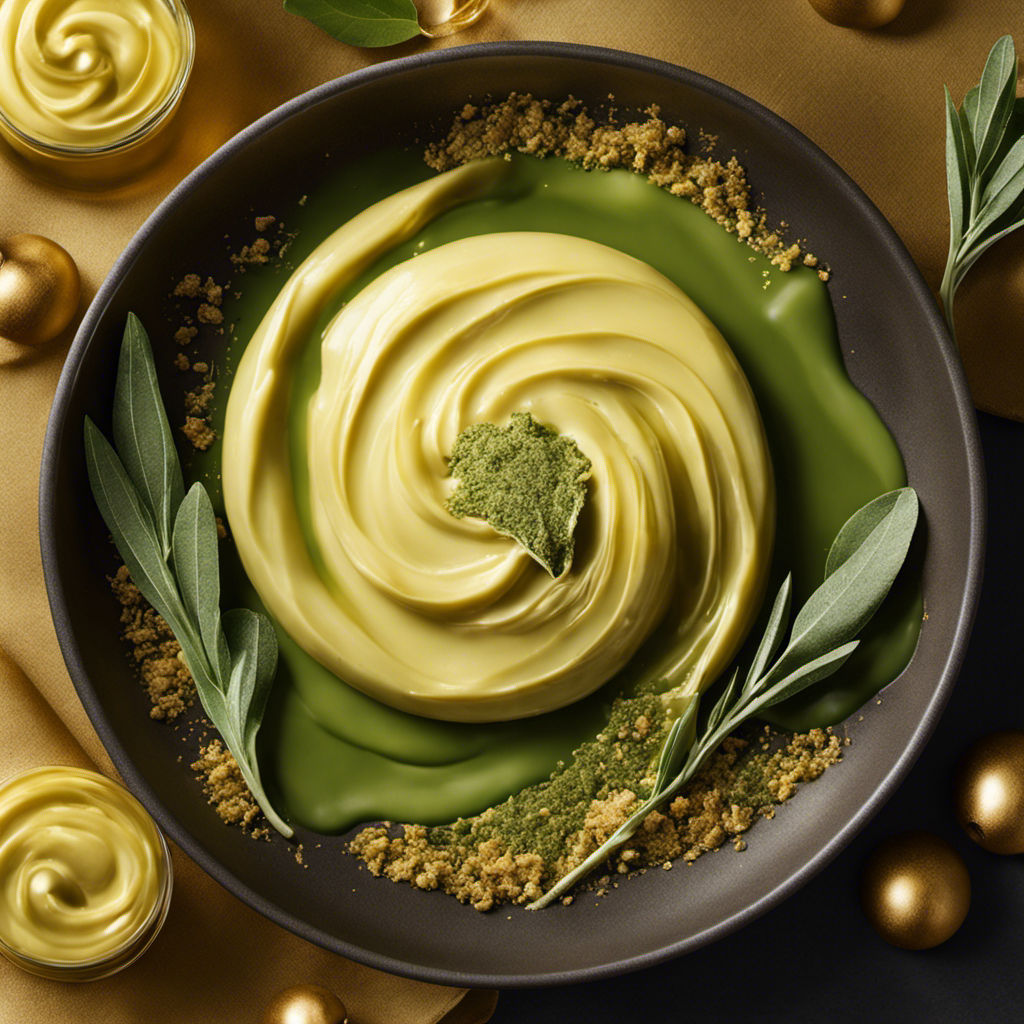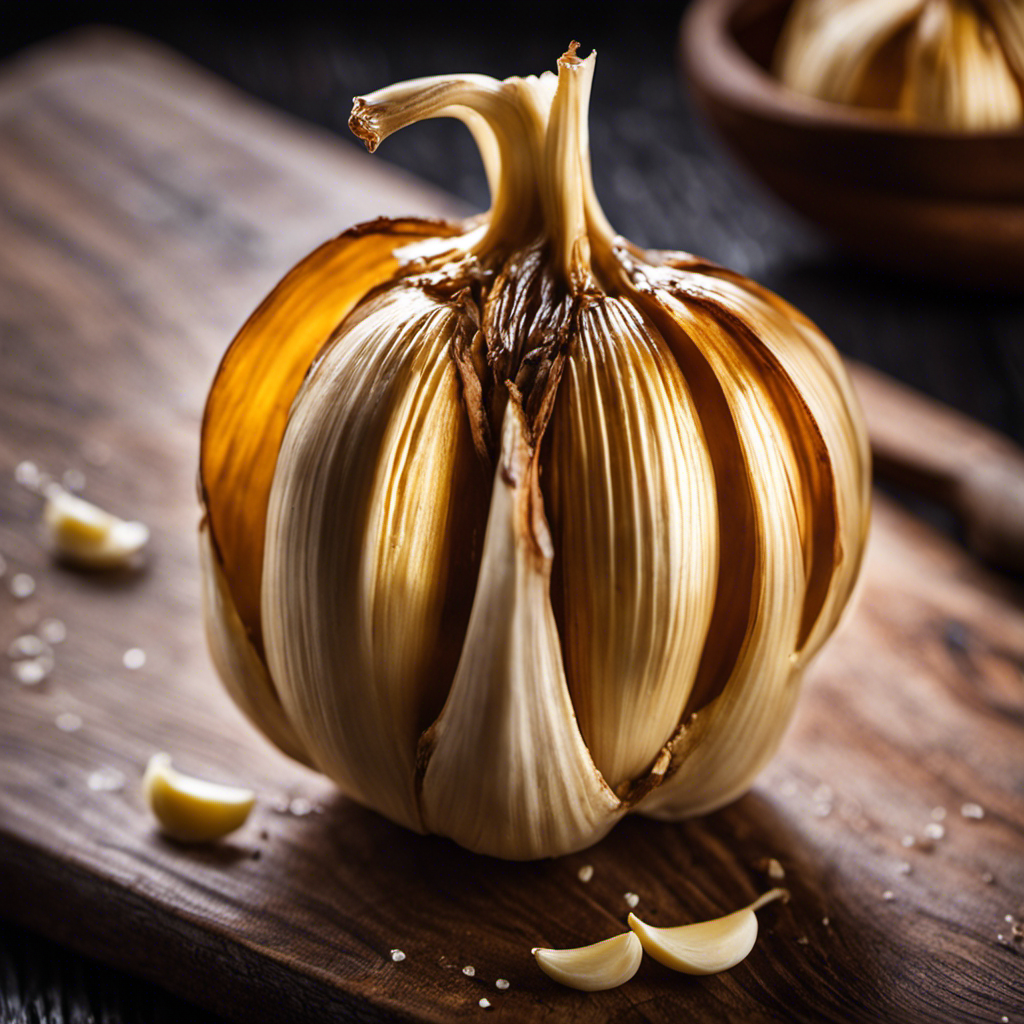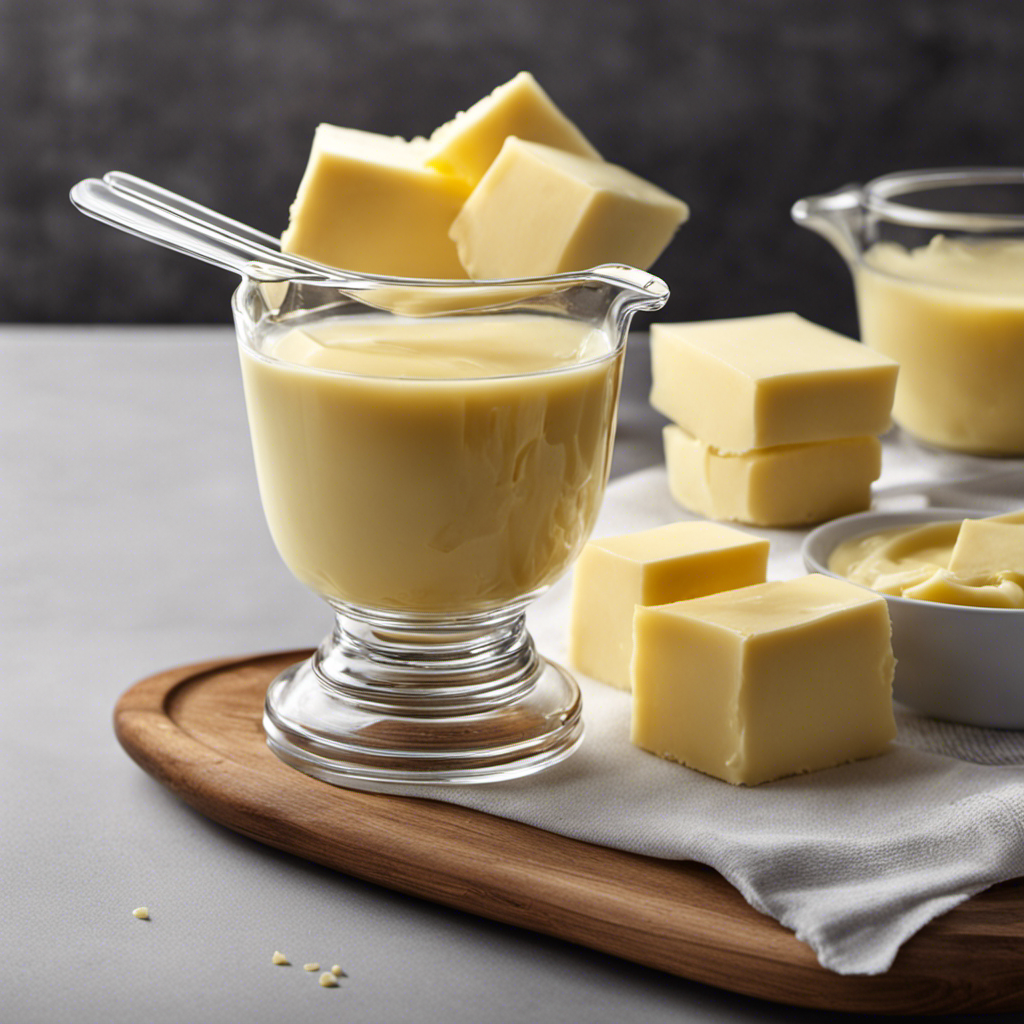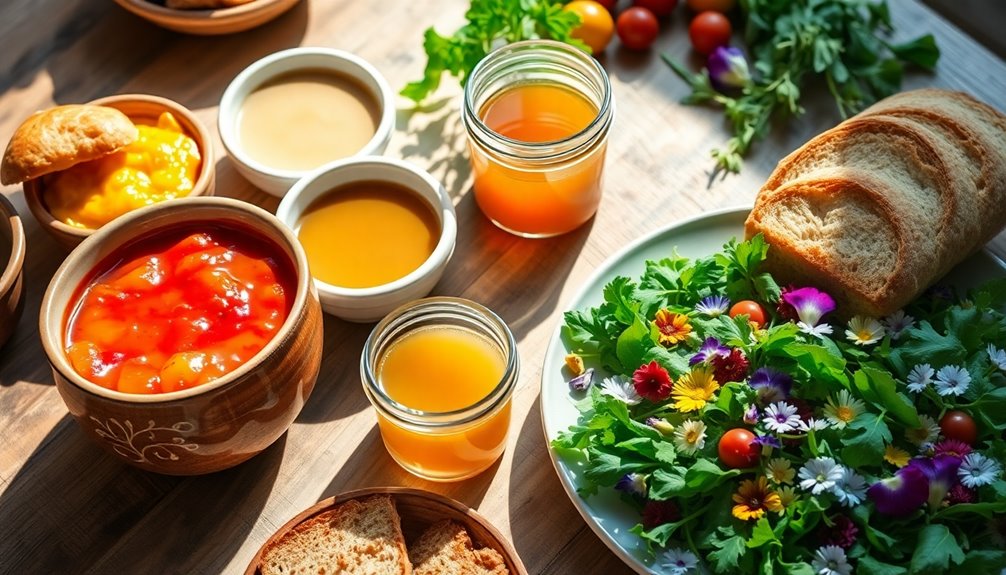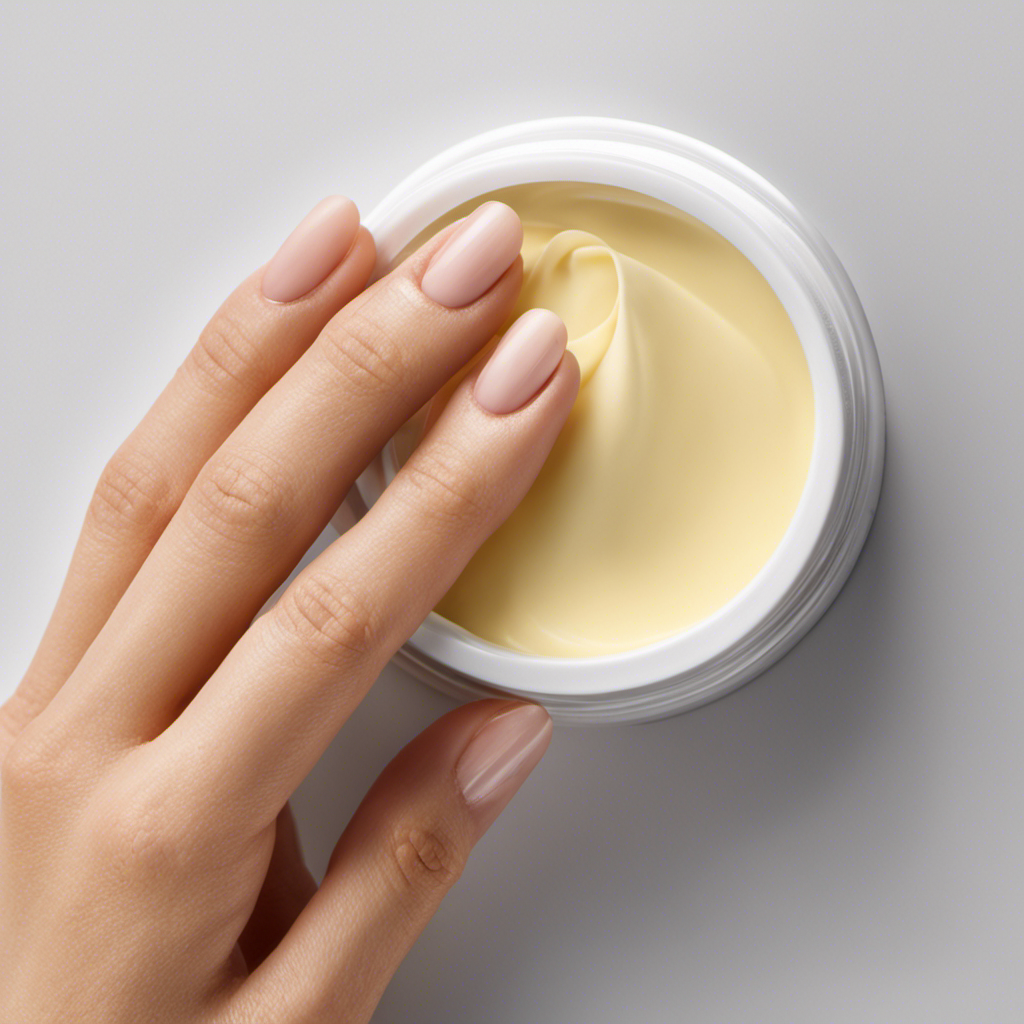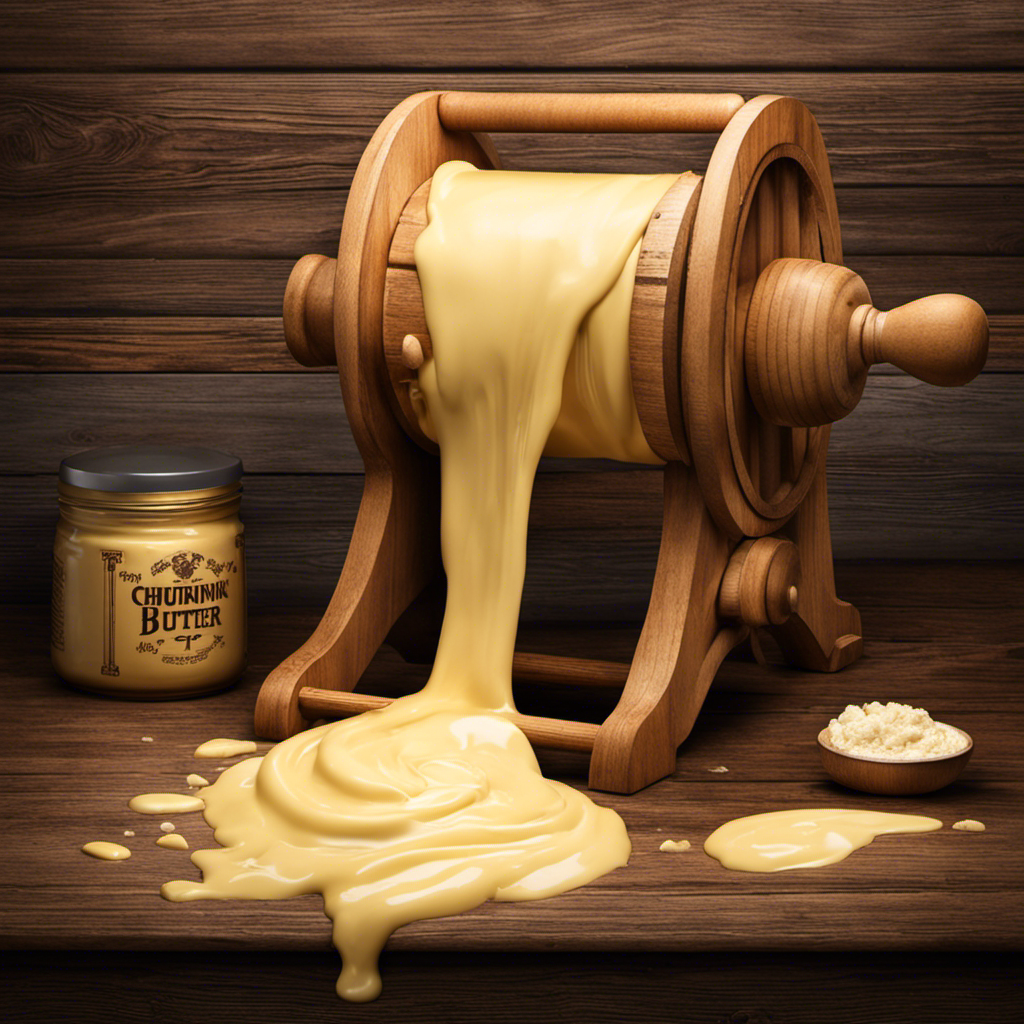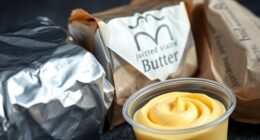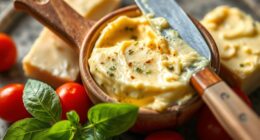Curious about how to enhance your dishes with a burst of savory flavor? Sage brown butter is the perfect solution!
This golden elixir, made by melting and browning butter with aromatic sage leaves, will take your culinary creations to the next level. With its rich and nutty taste, sage brown butter adds depth and complexity to everything from roasted vegetables to pasta dishes.
Join me as I guide you through the simple yet transformative process of making this delectable concoction.
Key Takeaways
- Choose vibrant and green leaves of sage for the best flavor.
- Properly melt and brown the butter to achieve a rich and nutty taste.
- Infuse the butter with sage flavors by simmering fresh sage leaves in the melted butter.
- Strain the butter to remove sage leaves and impurities for a refined final product.
Selecting and Preparing Fresh Sage
Before you start making the sage brown butter, make sure you have fresh sage leaves on hand.
When it comes to selecting and preparing sage leaves, there are a few key things to keep in mind. First, always choose leaves that are vibrant and green, avoiding any that are wilted or discolored.
To preserve the freshness of your sage, store it in the refrigerator wrapped in a damp paper towel or in a plastic bag with some air holes.
When you’re ready to use the sage, gently wash the leaves under cool water and pat them dry with a clean towel. Removing the tough stems is also important, as they can be bitter. Simply hold the stem at the base and strip the leaves off with your fingers.
With these simple steps, you’ll have perfectly prepared sage leaves for your delicious sage brown butter.
Melting and Browning the Butter
While melting and browning the butter, it’s important to keep a close eye on the stove to prevent burning. This melting technique and browning process are crucial for achieving the rich and nutty flavor of sage brown butter. Here are some key steps to follow:
-
Use a medium heat: Start by melting the butter in a saucepan over medium heat. This allows the butter to melt evenly without scorching.
-
Swirl the pan: Continuously swirl the pan to ensure even heat distribution. This helps the butter to brown evenly and prevents any hot spots.
-
Watch for color change: As the butter melts, it will go through different stages. First, it will foam, then the foam will subside, and finally, the butter will turn a golden brown color. Pay close attention to prevent any burning.
-
Remove from heat: Once the butter reaches a beautiful golden brown color and releases a nutty aroma, immediately remove it from the heat to prevent further browning.
Now that the butter is perfectly melted and browned, it’s time to move on to the next step: adding sage to the butter.
Adding Sage to the Butter
After browning the butter, it’s time to infuse it with the aromatic flavor of sage. Adding sage to the butter will transform it into a flavorful seasoning that can elevate any dish. Sage is a herb known for its earthy and slightly peppery taste, making it a perfect match for butter.
To create herb-infused butter, simply follow these steps:
- Melt the browned butter in a saucepan over low heat.
- Add fresh sage leaves to the melted butter.
- Allow the sage to simmer in the butter for about 5 minutes, stirring occasionally.
- Remove the saucepan from heat and let the butter cool slightly.
- Strain the butter to remove the sage leaves, leaving behind the infused butter.
The result is a rich and aromatic butter that can be used to enhance the flavor of roasted vegetables, pasta dishes, or even spread on warm bread. The combination of the nutty brown butter and the herbal notes of sage creates a truly delightful culinary experience.
Infusing the Butter With Sage Flavors
To infuse the butter with the flavors of sage, simply simmer fresh sage leaves in the melted butter for about 5 minutes. This infusing technique allows the butter to absorb the aromatic essence of the sage, creating a deliciously fragrant and flavorful compound butter.
Here are some flavor pairings to enhance your sage brown butter:
-
Lemon zest: Add a bright and citrusy note to your butter by grating some fresh lemon zest into the mixture. This adds a refreshing tang that pairs perfectly with the earthiness of sage.
-
Garlic: For a savory and garlicky twist, mince some garlic cloves and sauté them in the butter before adding the sage leaves. The combination of garlic and sage creates a bold and robust flavor profile.
-
Parmesan cheese: Sprinkle in some finely grated Parmesan cheese to give your sage brown butter a rich and nutty taste. The saltiness of the cheese complements the herbal notes of the sage beautifully.
-
Black pepper: A dash of freshly ground black pepper adds a subtle hint of spiciness to the butter, balancing out the other flavors and adding depth to the overall taste.
With these infusing techniques and flavor pairings, your sage brown butter will elevate any dish, from pasta to roasted vegetables, with its irresistible aroma and taste.
Straining Out the Sage Leaves
Now that you’ve simmered the sage leaves in the melted butter, strain out the leaves to achieve a smooth and velvety texture. Straining the butter is an important step in the process of making sage brown butter, as it removes any bits of sage leaves and impurities, ensuring a refined and flavorful final product. There are different straining methods you can use, depending on your preference and the tools you have available. One common method is to pour the melted butter through a fine-mesh sieve or cheesecloth-lined strainer into a bowl. This helps to catch any solids while allowing the smooth butter to pass through. Another option is to use a coffee filter placed in a funnel, which provides a more thorough strain. Once strained, you can enhance the flavor of the sage brown butter by adding other herbs like thyme or rosemary. This adds complexity and depth to the butter, making it even more delicious.
| Straining Methods | Advantages | Disadvantages |
|---|---|---|
| Fine-mesh sieve | Easy to use | Some solids may pass through |
| Cheesecloth-lined strainer | Effective in removing solids | Requires extra equipment |
| Coffee filter and funnel | Thorough strain | Takes longer to strain |
Experiment with different straining methods and herb combinations to find your perfect sage brown butter. Enjoy the rich, aromatic flavor it brings to your dishes!
Storing and Using Sage Brown Butter
When storing sage brown butter, it’s important to keep it in an airtight container in the refrigerator to maintain its freshness and flavor.
Here are some techniques for storing and using sage brown butter:
-
Refrigerate: Store the sage brown butter in the coldest part of the refrigerator to ensure it stays solid and doesn’t melt.
-
Airtight Container: Transfer the butter to a clean, airtight container to prevent any odors from seeping in and to maintain its rich aroma.
-
Label and Date: Don’t forget to label the container with the date of preparation. Sage brown butter can last for up to two weeks in the refrigerator.
-
Recipe Substitutions: Sage brown butter adds a unique flavor to dishes, but if you run out or need a substitute, you can try using regular butter with a sprinkle of dried sage or other herbs for a similar taste.
Tips for Achieving the Perfect Brown Butter
Achieving the perfect brown butter requires patiently melting the butter over low heat until it turns a rich, nutty color. This step is crucial for infusing the butter with a deep, caramelized flavor that elevates any dish.
To ensure success, it’s important to use a heavy-bottomed pan and keep a close eye on the butter as it melts. Stirring occasionally prevents the butter from burning and promotes even browning.
Once the butter reaches a golden hue, remove it from the heat and let it cool slightly before transferring to an airtight container for storage. When storing brown butter, it’s best to keep it in the refrigerator, where it will last for several weeks.
Now that you’ve mastered the art of achieving perfect brown butter, let’s explore the various variations and flavor enhancements you can experiment with to take your dishes to the next level.
Variations and Flavor Enhancements
When it comes to cooking, I love experimenting with unique ingredient combinations to create bold and unexpected flavors. From pairing sweet and savory ingredients to combining different cultural flavors, the possibilities are endless.
In addition, I’ve discovered that the cooking techniques I use can greatly enhance the depth of flavors in my dishes. Whether it’s slow roasting, braising, or using a variety of spices and herbs, these techniques add layers of complexity that take a dish from ordinary to extraordinary.
Unique Ingredient Combinations
To create unique flavor combinations, you can experiment with adding unexpected ingredients to your sage brown butter recipe. Here are some cooking techniques and recipe suggestions to elevate your dish to the next level:
-
Citrus Twist: Add a burst of freshness by squeezing a little lemon or orange juice into the brown butter. The tangy citrus flavor pairs beautifully with the earthy sage.
-
Nutty Delight: Enhance the nuttiness of the brown butter by stirring in a handful of toasted pine nuts or chopped walnuts. The crunch and richness will take your sage brown butter to new heights.
-
Sweet and Savory: For a delightful contrast, try incorporating a touch of honey or maple syrup into the mix. The hint of sweetness complements the savory sage and creates a harmonious balance.
-
Spice it Up: Give your sage brown butter a kick by adding a pinch of red pepper flakes or a dash of cayenne pepper. The subtle heat will add depth and complexity to your dish.
Cooking Techniques for Depth
By incorporating various cooking techniques, you can deepen the flavor of your sage brown butter recipe.
When it comes to baking, achieving depth of flavor is key. One technique that can enhance the taste of your brown butter is browning the butter itself. This process involves melting the butter over low heat until it turns a rich golden color and develops a nutty aroma. This enhances the natural flavors of the butter and adds a caramelized note to your dish.
Another technique is infusing the butter with sage. Simply melt the butter and add fresh sage leaves, allowing them to steep for a few minutes. This imparts a subtle earthy and herbaceous flavor to the butter, elevating the taste of your dish.
Serving Ideas and Recipe Suggestions
When it comes to creating unique flavor combinations, the possibilities are endless. Whether it’s a surprising blend of sweet and savory or a fusion of different cuisines, experimenting with flavors can take your dishes to the next level.
Not only does it add excitement to your meals, but it also allows for versatility in dishes, making it easy to adapt recipes to suit different tastes and dietary preferences.
Unique Flavor Combinations
Experimenting with unique flavor combinations can elevate your culinary creations to a whole new level. When it comes to cooking, the possibilities are endless. By mixing unexpected ingredients and experimenting with herbs, you can create dishes that are both delicious and exciting.
Here are four unique ingredient pairings to inspire your culinary adventures:
-
Lemon and Thyme: The bright citrus flavor of lemon pairs perfectly with the earthy notes of thyme. Whether you’re making roasted chicken or sautéed vegetables, this combination will add a refreshing twist to your dishes.
-
Raspberry and Basil: The sweetness of ripe raspberries combined with the aromatic freshness of basil creates a delightful contrast. Try adding this combination to salads, desserts, or even cocktails for a burst of flavor.
-
Coconut and Curry: The creamy richness of coconut milk combined with the warm and fragrant spices of curry creates a complex and satisfying flavor profile. Use this combination to elevate your curries, soups, or even roasted vegetables.
-
Honey and Rosemary: The sweetness of honey paired with the piney and floral aroma of rosemary creates a harmonious blend. Drizzle honey infused with rosemary over grilled meats or vegetables for a unique and delicious twist.
By experimenting with these unique ingredient pairings and exploring the world of herbs, you can take your cooking to new heights and surprise your taste buds with exciting flavors.
Versatility in Dishes
You can elevate your culinary creations to a whole new level by exploring the versatility in dishes. The beauty of cooking lies in the endless possibilities and creative uses of ingredients.
From simple salads to complex main courses, there are countless ways to incorporate versatility in recipes. Take, for example, the humble potato. It can be mashed, roasted, fried, or even turned into a creamy soup.
By experimenting with different cooking techniques and flavor combinations, you can transform a basic ingredient into a show-stopping dish. Don’t be afraid to think outside the box and combine unexpected ingredients. Maybe a sprinkle of cinnamon in your savory stew will add a unique twist.
The key is to let your imagination run wild and embrace the endless potential of versatile dishes.
Frequently Asked Questions
Can I Use Dried Sage Instead of Fresh Sage in This Recipe?
Yes, you can use dried sage instead of fresh sage in this recipe. Dried sage has a more concentrated flavor, so you may want to use less. It’s a great substitute for fresh sage in many recipes.
How Long Does It Take for the Butter to Melt and Brown?
When making sage brown butter, it’s important to pay attention to the melting and browning process. To achieve perfect browning, melt the butter over medium heat and stir constantly. Use low heat to prevent burning.
Can I Use a Different Type of Butter, Such as Margarine or Ghee?
Yes, you can use margarine or ghee instead of butter for a different flavor. However, keep in mind that the taste and texture may vary. You can also experiment with alternative herbs or spices to infuse the butter.
Can I Use Other Herbs or Spices to Infuse the Butter Instead of Sage?
Sure, you can definitely use other herbs or spices to infuse the butter. It’s like adding a splash of color to a blank canvas. Experiment with rosemary, thyme, or even chili flakes for infused butter recipes that complement different dishes.
How Long Can I Store Sage Brown Butter and How Should It Be Stored?
I store sage brown butter in an airtight container in the fridge. It can last for up to 2 weeks, but I usually finish it within a few days because it’s so delicious!
Conclusion
In conclusion, making sage brown butter is a simple yet flavorful way to elevate your dishes. By following the steps outlined in this article, you can create a rich and fragrant butter infused with the essence of sage.
Imagine drizzling this golden goodness over roasted vegetables or tossing it with freshly cooked pasta for a quick and delicious meal.
One example of how sage brown butter can transform a dish is by adding a spoonful to a bowl of creamy mashed potatoes, creating a savory and aromatic side dish that will impress your guests.
So go ahead and give it a try – your taste buds will thank you!
